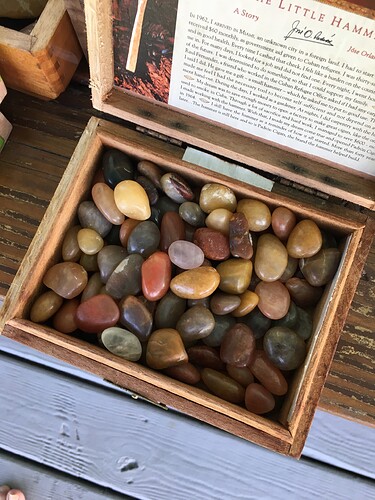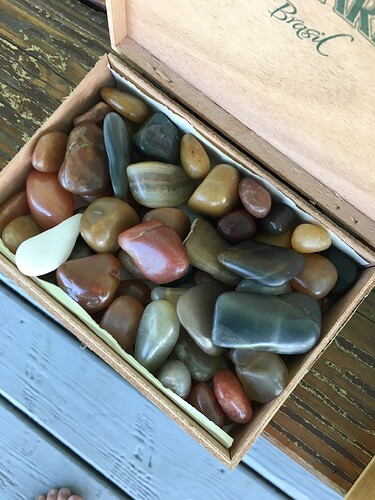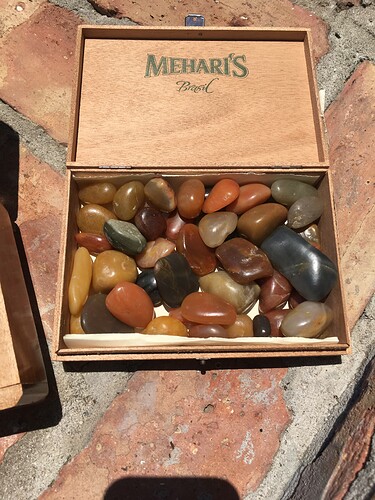Hello. I live in the lower half of Louisiana’s boot, about 60 miles north of New Orleans, which is where I am from. As a young girl, I formed a labeled collection of shells and rocks collected on trips across the country on some shelves in the hall closet.
About twenty years ago, I collected and studied dzi beads and carved and decorated carnelians and agates from ancient cultures in the east. I had to sell that collection and still could kick myself for selling my favorite bead; a pinkish orange etched with cuniform in black carnelian. I would pay a fair price to have that back, but alas it is gone.
About four years ago, we got some loads of big rock and I noticed anomalies in color, size and shape from what I was use to seeing, mostly on gravel roads her in Louisiana, and away I went.
Since then I have read, read some more, handled, had polished, tested and learned over and over and over. One piece of equipment led to the next, to the next and so on.
When I first began picking up these stones and handling them, I was very sure they are ancient (I understand that all stones are ancient) in the sense they had been specifically chosen and shaped by ancient indigenous cultures. I guess I knew this because I had handled so many ancient stones from the east. I have come to learn in order to know stones, you must handle them.
There are many ancient native tribes known to this area, but part of me feels these are much older. The variation on color, size, type and shape is astonishing to have found, in my mind, here in Louisiana, where we don’t have massive rock.
What we do have is rivers and plenty of them, some of them appearing to be offshoots of the proposed Paleo Bell River. And of course, we have the mighty Mississippi.
In this area we have had the massive asteroid impact in the Gulf of Mexico, theorized to have extincted the dinosaur and in that same area, an extinct volcano 8,000 feet below the Gulf.
There is also some very good evidence there was a similar strike, on a smaller scale, in the next parish over, not far from where I live.
At any rate it has been my insatiable curiousity about how these stones came to be here which has culminated in “The Refractometer” which I have been trying to use correctly for the last month. Here are my main issues and I hope someone can either help or lead in the right direction. I have read and looked at every article and video on the internet and it’s not helping appreciably.
-
This is a GIA Duplex II, gray in pretty good condition. I polished the hemicylinder and can see a distinct turquoise green line. However, it moved from the bottom up, distinct from the dark area of 1.81 and NOT from the top as most tutorials indicate it should. This is WITHOUT the magnifying lens, which is the only lens which came with it. With the lens, the very faint line, not always greenish, moves from the top down and without, the very distinct green line moves from the bottom up.
-
Spot reading cabochons has not worked. The RI liquid is fine and I can see the shape of the stone contact but when moving my head, the shadow of the stone blinks from dark to light with no discernible half light half dark I can see.
That’s for starters! I have been really reticent to come forward before now, because after four years of study, I know more than I did, but not enough! It’s a very complex subject. I do have other interests but I love my rocks!
Here’s some photos.
Thanks in advance for any help.


